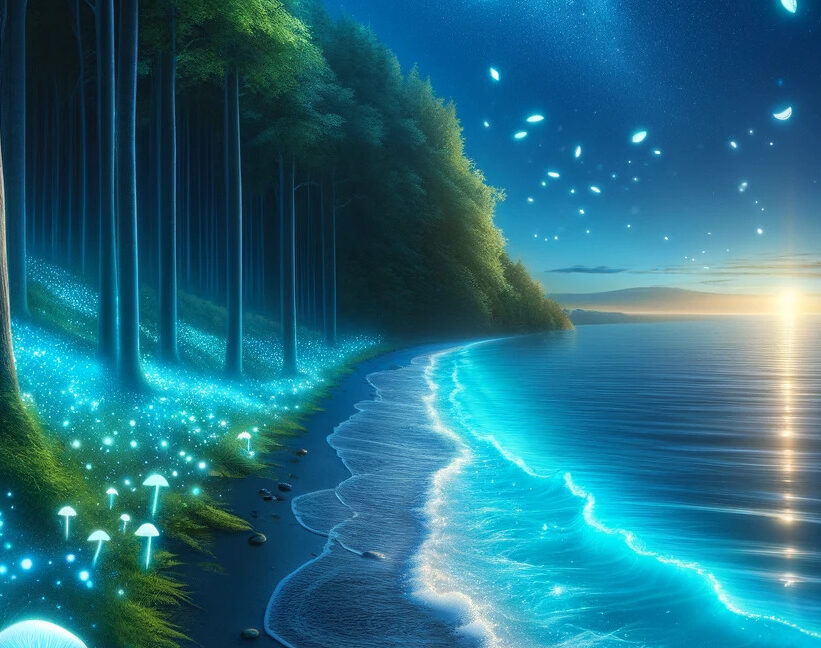Have you ever wondered how the night sky might look if the stars were closer, perhaps even within our reach? Imagine if I told you that such a spectacle exists here on Earth, beneath the canopy of forests and the depths of our oceans. This phenomenon, known as bioluminescence, is nature’s own version of the night lights, and it’s nothing short of magical.
A Glowing Introduction
Bioluminescence is the emission of light by living organisms. It’s a chemical reaction that produces light energy within an organism’s body. For many of us, the most familiar bioluminescent creature is the firefly. However, this phenomenon spans across various species, including some fungi, numerous marine animals like jellyfish, and even some types of worms. The purpose of this glow ranges from attracting mates and luring prey to camouflaging and warding off predators.
Underwater Fireworks
Dive into the ocean’s depths at night, and you might witness what looks like an underwater fireworks display. Creatures like the anglerfish use bioluminescence to hunt, dangling a lighted lure in front of their mouths to attract prey. Meanwhile, some species of squid emit a glowing ink to escape predators. Perhaps the most mesmerizing of all are the bioluminescent bays, where microorganisms called dinoflagellates light up the water when disturbed, creating a starry night beneath the surface.
Forests Aglow
On land, bioluminescence creates its own version of a starlit sky. In certain parts of the world, you can find glowing mushrooms casting an eerie yet enchanting light along forest floors. This spectacle is not just for show; it’s believed that the glow attracts insects, which in turn help in dispersing the fungi’s spores.
Conservation and Tourism
Bioluminescence also plays a significant role in ecotourism, drawing visitors to bioluminescent bays and forests. While this boosts local economies, it also underscores the importance of conserving these delicate ecosystems. Light pollution, water pollution, and habitat destruction are threats to bioluminescent species. Responsible tourism and conservation efforts are crucial in ensuring that these natural wonders continue to thrive.
A Natural Wonder
The phenomenon of bioluminescence reminds us of nature’s magic and mystery. It’s a beautiful example of how life on Earth can be incredibly diverse and fascinating. Whether it’s the glow of a firefly on a warm summer night or the luminescent waves of a distant shore, bioluminescence adds a touch of wonder to our world, proving that sometimes, the most magical things are those that exist in the natural world around us.
Final Thoughts
Bioluminescence is more than just a beautiful display; it’s a critical part of our natural world. As we continue to explore and understand this phenomenon, we’re reminded of the intricate connections within ecosystems and the importance of preserving the planet’s biodiversity. So, the next time you see a firefly or hear about a glowing beach, remember that you’re witnessing one of nature’s most extraordinary wonders.


